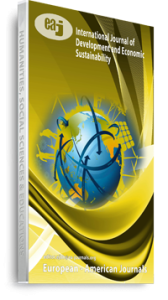Access to finance has several meanings, reasons and consequences. Normally, access to finance has two facets, i.e. at household or individual level and business firm level (Beck and Kunt, 2008; World Bank, 2009) to reach in financial institutions to consume financial services. Many policies are formulated and practiced in Nepal to increase access to finance, still the situation is poor. Number of financial intermediaries are increased since the decades, however a larger segment of people are out of financial mainstream. Still, the people do not know about financial services, about service centers and doing business; i.e. financial literacy is poor. From this, a consistent and sustainable access of them to financial services is questionable. Access of people in financial services or access of service providers to people is a ‘double barrel’ question. Similarly, why the poor access among the efforts to increase it since some decades in Nepal is a big question. The paper presents some of the reasons for the poor access of people in financial services. The paper is based on analytical design with some secondary data.
Keywords: Access To Finance, Barriers, Development, Financial Inclusion, Financial literacy

